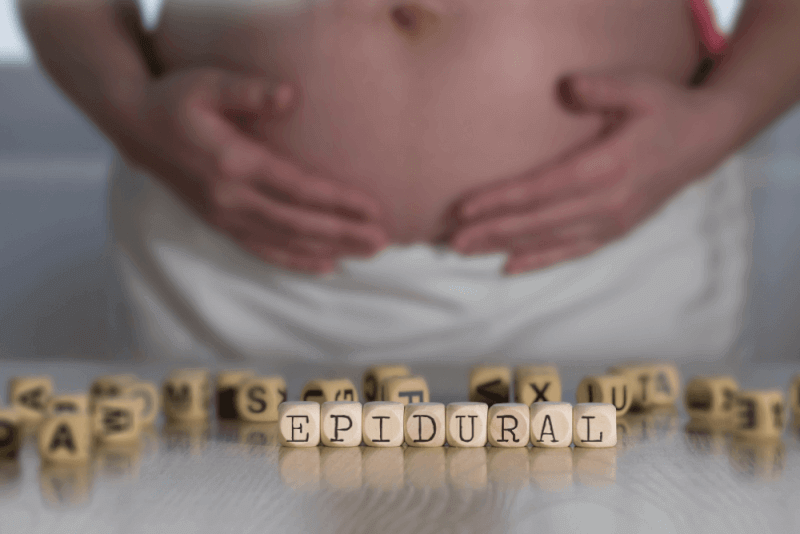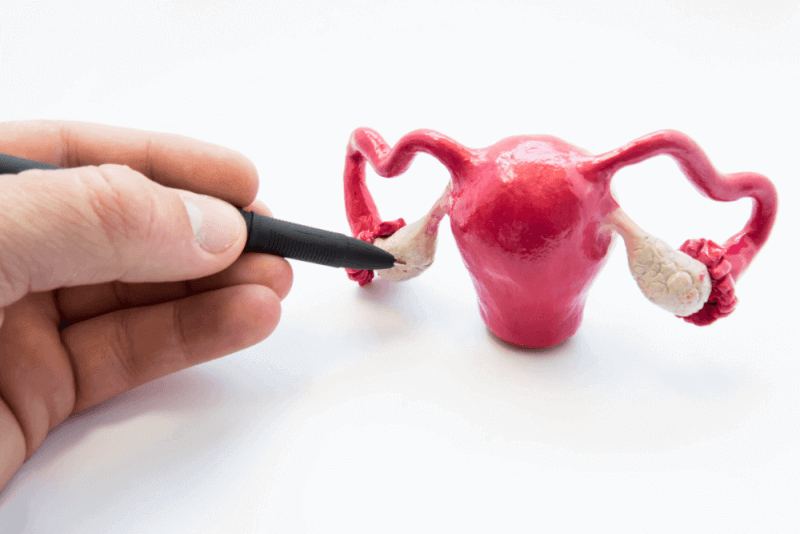What is the menstrual cycle?
The menstrual cycle, which is usually included in the physiological changes during puberty of girls between the ages of 11 and 14, is a process that continues from puberty until menopause. The first menstrual cycle is called menarche.
The menstrual cycle is basically the female body preparing itself for the possibility of becoming pregnant. During this cycle, which usually lasts 28 days, a mature egg from one ovary is usually released into the fallopian tube. This process is called ovulation or ovulation. In addition, the preparation of the uterus for pregnancy also takes place during this process. Preparations of the uterus for pregnancy include thickening of the uterine wall. In addition, the vascularization of the uterine wall increases for the baby's nutrition. Besides all these, the main change that takes place in the uterus is hormones.
If fertilization does not occur during the menstrual cycle, then the uterus breaks down the thickened uterine wall in order to prepare again, and the broken parts are excreted through bleeding. This bleeding usually lasts between 3 and 8 days and is called a menstrual period. The 28-day menstrual cycle takes place in 4 different phases.
When does the menstrual cycle start?
The onset of menstruation is considered the final stage of the transition to puberty. The exact age at which the first menstrual cycle starts cannot be known with certainty. Because in addition to genetic factors, environmental factors also play a role in the onset of the first cycle. In general, it starts between the ages of 9 and 14. The end of the menstrual cycle usually occurs between the ages of 45 and 55.
An irregular cycle at the time of the onset of menstruation is to be expected. Because the first menstrual bleeding does not even show ovulation. For this reason, irregularities in the menstrual cycle are to be expected. In some months, it is even expected that there will be no bleeding at all. There is no need to worry about this situation. It can take up to 2 years after the first menstrual cycle for the menstrual cycle to settle into a regular pattern. In order for menstruation to become regular, the genital organs must be completed and the hormone secretion mechanisms must complete their development. Women have approximately 500 menstrual cycles between puberty and menopause.
Menstrual cycle calculation
The calculation of the menstrual cycle is particularly important for women who want to become pregnant. In this way, the times when fertilization is most likely can be determined. On the other hand, couples who are not planning a pregnancy should opt for more reliable contraception.
Different methods are used to calculate the ovulation period. These primarily include ready-made kits. In addition, basal body temperature measurement can also provide information about the ovulation period. In order to measure basal body temperature, the body must be measured every morning between two menstrual periods. These values are noted and body temperature is monitored.
The secretion of the hormone progesterone causes the body temperature to rise by 1 or 1.5 degrees Celsius. In the absence of ovulation, the body temperature is constant. The rise in body temperature occurs the day after ovulation.
How is ovulation calculated from the menstrual cycle?
For people with a regular menstrual cycle, it is very easy to calculate ovulation periods. For this reason, the first day of bleeding is considered the first day of the menstrual cycle. The completion of the cycle is the time until the first day of the next menstrual period. This period is usually 28 days. However, menstrual cycles between 21 and 35 days are also considered normal. If the menstrual cycle is 28 days, ovulation occurs on the 14th day before the next day of bleeding. is realized in a day. If you menstruate every 30 days, ovulation occurs on the 16th day before the first day of the next menstrual period. day. The calculation is therefore based on the number of days in the menstrual cycle minus 14.
If there is a pregnancy plan, sexual intercourse should take place on the day before or after the ovulation period. In addition, the duration of sperm, the male reproductive cell, in the female body varies between 4 and 5 days. For this reason, sexual intercourse is allowed for 5 days before ovulation.
How to calculate for people with irregular periods?
There are many causes of menstrual irregularity. In addition to physiological causes, it can also be caused by hormonal imbalances and different health problems. Irregular menstrual cycles make it impossible to determine the ovulation period. For this reason, ovulation kits sold in pharmacies can be used.
How many days should the menstrual cycle be?
The menstrual cycle is expected to be 28 days. However, between 21 and 35 days is also considered normal. Below 21 days, above 35 days or absence of menstruation for 3 months in a row is called menstrual irregularity.
Phases of the menstrual cycle
The menstrual cycle, which lasts on average 28 days, takes place in 4 phases. Hormonal and physical changes occur during each major phase.
Menstruation phase
At this stage, when menstrual bleeding occurs, the uterine wall is broken down and excreted through bleeding. This bleeding is called menstrual fluid. Blood cells make up most of the menstrual fluid. There are also endometrial epithelial cells and gland secretion.
Bleeding is heavy for the first 2 days and usually lasts between 3 and 8 days. Feminine hygiene products are used to absorb the bleeding. Changing hygiene products, usually every 4 hours, is extremely important for maintaining health and hygiene. However, the recommended durations for menstrual cups and pad panties vary. Especially if tampon use is preferred, care should be taken to ensure that the duration is not more than 4 hours. Otherwise toxic shock may occur.
Follicle stage
The follicle phase starts after menstruation and ends with ovulation. During this phase, the amount of estrogen secreted increases and the pituitary gland, stimulated by the hypothalamus in the brain, begins to secrete Follicle stimulating hormone. After FSH begins to be secreted, between 5 and 20 follicles begin to form in the ovaries. However, only 1 of these follicles is mature enough for fertilization. If more than one follicle matures enough for fertilization, a multiple pregnancy occurs. The development of follicles also stimulates the uterine wall. For this reason, the uterine wall thickens and vascularization increases.
Ovulation phase
In the ovulation phase, the mature egg is expelled from the ovary and lodges in the fallopian canal. During this phase, which usually occurs in the middle of the menstrual cycle, luteinizing hormone (LH) rises. After the egg is released into the fallopian tube, its lifespan is approximately 24 hours. If it does not join with the sperm during this time, the egg dies.
Corpus luteum stage
The follicle in which the egg has developed remains in the ovary after the egg is released into the fallopian tube. But it is structurally altered. This new structure is called the corpus luteum. After the structural change, it begins to secrete the hormone progesterone. This hormone helps the thickened uterine wall to maintain its condition and also helps the fertilized egg to implant in the uterus. If fertilization does not occur during the menstrual cycle, the corpus luteum ceases to function within a week. This causes the uterine wall to break down and bleeding occurs. When the bleeding occurs, the next menstrual cycle begins.
Common menstrual problems
Many problems can occur during the menstrual cycle. Some of these problems are due to physiological differences, while others are chemical.
Premenstrual Syndrome (PMS)
PMS affects approximately 90% of menstruating women. It occurs due to hormonal changes. In this syndrome, which starts approximately 10 days before the menstrual cycle begins, the symptoms seen in women include the following:
- Edema
- Headache
- Bloating
- Behavior changes
- Fatigue
- Depression
- Irritability
Dysmenorrhea
Dysmenorrhea, which means menstrual pain, is used to express that menstrual periods are painful. In cases where fertilization does not occur, it is caused by the uterus contracting more than normal due to the effect of certain hormones that allow the inner wall of the uterus to shed or physiological factors such as fibroids and polyps. Since the factors that can cause dysmenorrhea vary, the treatment also varies according to the underlying cause.
Severe Menstrual Bleeding
This problem, also called menorrhagia, is when women bleed so much that it affects their daily lives. In the treatment of menorrhagia, which causes anemia if untreated, the underlying cause must be known.
Amenorrhea
Postmenopausal is the name given to the absence of menstrual bleeding for 3 consecutive months, except for breastfeeding, pre-puberty and pregnancy. It is usually caused by excessive exercise and weight loss.
Irregular menstrual cycle
The cycle duration of the menstrual cycle is between 21 and 35 days. Menstrual cycles that are below or above this period are called irregular menstrual cycles. Irregular menstrual cycles can be caused by many different factors. These reasons include the following:
- Pregnancy
- Breastfeeding
- Eating disorders
- Excessive weight loss
- Excessive exercise
- Polycystic ovary syndrome
- Premature ovarian failure









